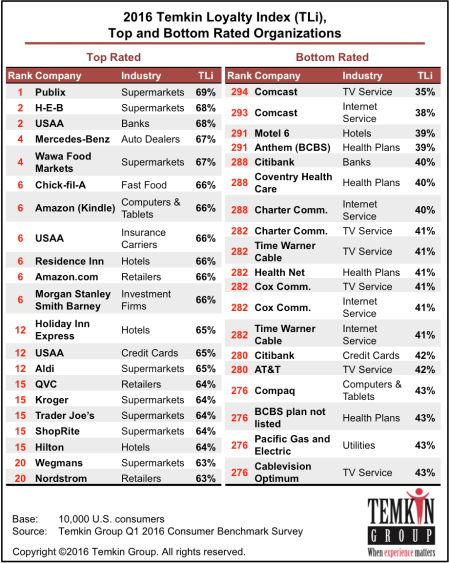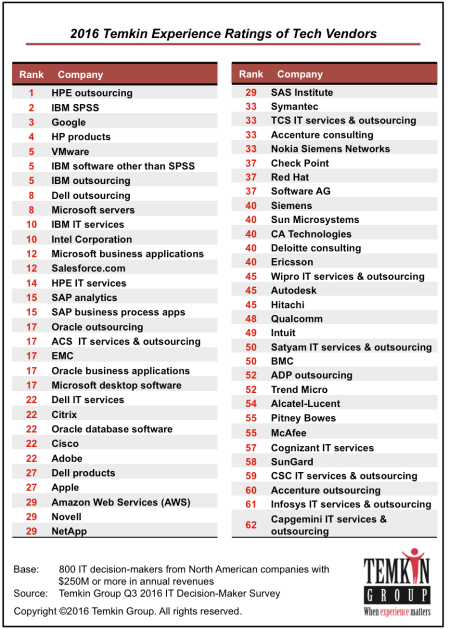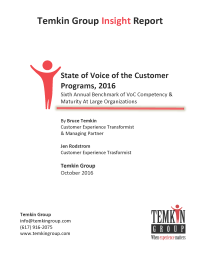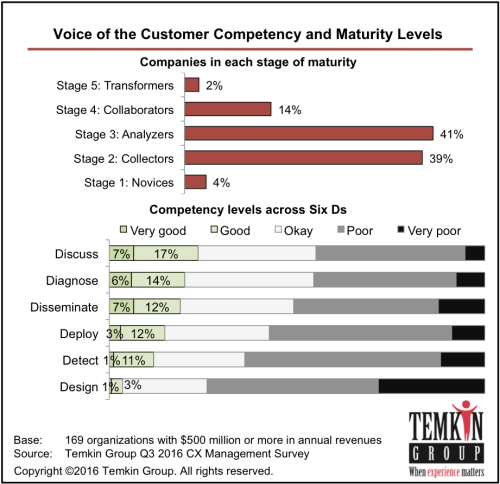 We published a Temkin Group report, Net Promoter Score Benchmark Study, 2016. This is the fifth year of this study that includes Net Promoter® Scores (NPS®) on 315 companies across 20 industries based on a study of 10,000 U.S. consumers. Here’s the executive summary:
We published a Temkin Group report, Net Promoter Score Benchmark Study, 2016. This is the fifth year of this study that includes Net Promoter® Scores (NPS®) on 315 companies across 20 industries based on a study of 10,000 U.S. consumers. Here’s the executive summary:
As many large companies use Net Promoter® Score (NPS) to evaluate their customer loyalty, Temkin Group measured the NPS of 315 companies across 20 industries. With an NPS of 68, USAA’s insurance business earned the highest score in the study for the fourth year in a row. Four other companies also earned an NPS of 60 or higher: Cadillac, USAA’s banking business, Apple, and USAA’s credit card business. In addition to earning some of the top scores, USAA’s banking, credit card, and insurance businesses also all outpaced their respective industries’ averages by more than any other company. Comcast, meanwhile, earned the lowest NPS for the second year in a row, coming in just below Time Warner Cable, Cox Communications, and McDonalds. And while all 20 industries increased their average NPS from last year, utilities enjoyed the biggest improvement in its score. Out of all the companies, US Airways’s and Advantage Rent-A-Car’s scores improved the most, whereas TriCare’s and Lexus’s scores declined the most. On average across the industries, the youngest consumers gave companies the lowest NPS, while 35- to 44-year-olds gave them the highest NPS.
See the NPS Benchmark Studies from 2012, 2013, 2014, and 2015.
Here’s a list of companies included in this study (.pdf).
Download report for $495
(includes report (in .pdf) plus dataset in Excel)

Here are the NPS scores across 20 industries:

Here are some other highlights of the research:
- Five industries toped the list with an average NPS of 40 or more: auto dealers, software, investments, computers & tablets, and appliances.
- The bottom scoring industries are TV service providers, Internet service providers, and health plans.
- USAA’s insurance, banking, and credit card businesses earned NPS levels that are 30 or more points above their industry averages. Five other firms are 20 or more points above their peers: com, credit unions, Chick-fil-A, Apple, and Trader Joe’s.
- Five companies fell 25 or more points below their industry averages: RadioShack, Motel 6, eMachines, McDonalds, and Days Inn.
- US Airway’s NPS increased by 31 points between 2015 and 2016, the largest increase of any company. Eight other companies improved by 25 or more points: Fifth Third, 21st Century, Fujitsu, DHL, MetLife, HSBC, Commonwealth Edison, PSE&G, and Hannaford.
- TriCare, Lexus, Mercedes-Benz, Baskin Robins, and Nordstrom had double-digit declines in NPS between 2015 and 2016.
Download report for $495
(includes report (in .pdf) plus dataset in Excel)

If you want to know what data is included in this report and dataset, download this sample Excel dataset file.
P.S. Net Promoter Score, Net Promoter, and NPS are registered trademarks of Bain & Company, Satmetrix Systems, and Fred Reichheld.
![]()

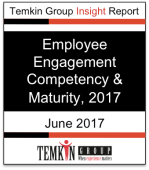
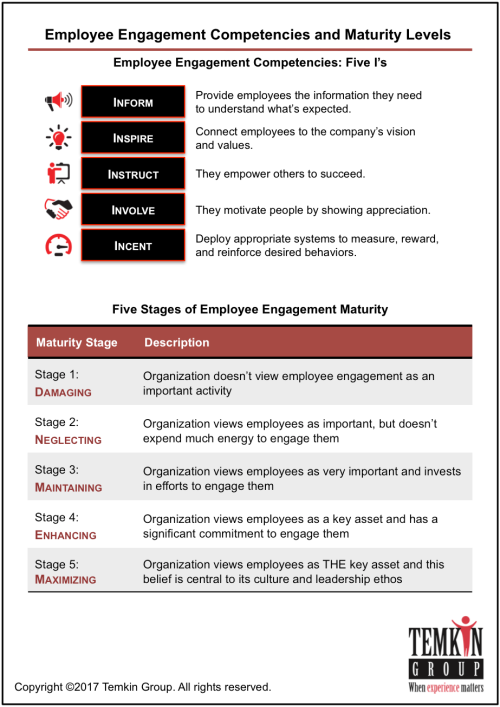
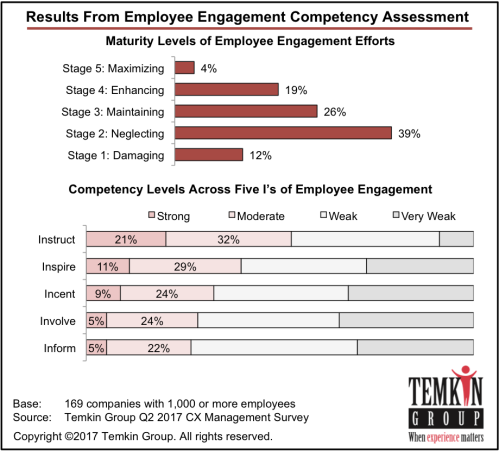
















 Temkin Group created the Client Success Ratings (CSR), which is the percentage of respondents who answered 6 or 7. As you can see below, the average CSR is 63%, which is an increase from 61% last year.
Temkin Group created the Client Success Ratings (CSR), which is the percentage of respondents who answered 6 or 7. As you can see below, the average CSR is 63%, which is an increase from 61% last year.



